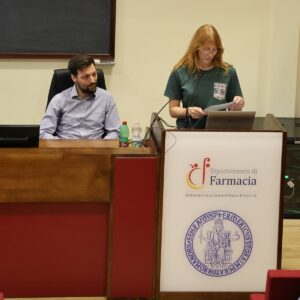Welcome to the second episode of In Vitro Focus, a series of in-depth articles written by our technical staff to bring you to the heart of the world of cruelty-free testing.
Together we’ll discover all the best practices, latest news, and key players in the industry that is striving to make animal testing a thing of the past.
The importance of the 3 Rs
In the previous issue we saw that Refinement means the improvement of experimental techniques, still performed on animals, in order to reduce their suffering; with Reduction we mean the reduction of the number of animals used, or the increase the information obtained with the same number of animals; with Replacement we mean the replacement of animal using alternative methods.
Of these, only the last R really aims to oppose the use of animals: from a scientific point of view it makes no sense to continue to test on animals changing only the number of animals, or the species, and the mode of the experiment.
However, to define a method as alternative, the concept of the 3 R’s continues to apply and therefore the various “alternative” methods used today and “validated”, i.e. accepted by international standards, are of all three types, and not only of the Replacement type.
The veto on animal testing and the REACH Regulation
Alternative testing was brought to relevance by two seemingly opposing legislative acts.
On one side 7th Amendment of the Cosmetics Directive (2003/15/EC) with its veto on animal testing for cosmetic products and substances used in cosmetic products, on the other hand the implementation of the REACH Regulation (Registration, Evaluation and Authorisazion of Chemicals), EC Regulation n.1907/2006, which regulates the production, use and importation of chemical substances in the European Union, with a requirement to submit complete toxicology dossiers for more than 30,000 chemicals.
Using traditional testing methods to comply with the new REACH requirements would have been very expensive and time-consuming, this has significantly increased the importance of research into alternative methods that allow a reduction in costs and number of animals used.
All the different types of alternative testing
Here are all the alternative methods to the animal model currently in use:
- In vitro modelsthat are based on experiments conducted on isolated organs, tissues, cells, or biochemical systems.
Such models use in vitro cultures of cells, preferably human, to obtain valid results for humans, or “reconstructed tissues” (like our own Corrositex and Ocular Irritection), i.e. three-dimensional systems of both traditional and “dynamic” type, in which specialized cells of various parts of the human body are reproduced with the aim of obtaining tissues usable in toxicological investigations representative of target organs.
-
In fact, human tissues “reconstituted”in vitro from individual cell types aim to reproduce the original architecture of the in vivo tissue.
Thanks to recent developments in 3D printing techniques, it is possible to reconstitute various human tissues with a high level of precision.Examples of 3D reconstructed tissues include epidermis, corneal, oral and gingival epithelium, vaginal and respiratory epithelium.
- Studies on research-donated human tissue and organs either “from cadaver” or “from surgery.” The materials that can be made available are various: blood, placenta, umbilical cord, tissues removed during surgery (skin, viscera, bone, cartilage) or from biopsies.
- Use of microorganisms to prove genetic damage caused by chemicals or radiation. For example, the microorganism-based Ames test is a mutagenicity test, meaning it can identify chemicals that damage DNA in cells.
- Use of induced pluripotent stem cells (iPSCs); these are “pre-mature” cells capable of differentiating into the different cell types that make up the body.
Today, iPSCs can be derived directly from human cells, such as those in the dermis of the skin, and differentiated into a large number of cell types in the human body without the need for embryos.
- Studies on human volunteers.
- Theoretical mathematical computer models that are based on the quantitative structure-activity relationship (QSAR, referred to as the in silico approach).
These are models capable of predicting the possible effects of a substance on the body by comparing it with structurally similar substances whose effects are already known.
- The use, to evaluate the properties of compounds that have similarities from a chemical structure perspective, of information from test data on analogs using the read-across method or, for a group of substances, using the “category” approach. Sufficient information and adequate justification must be presented for these forecasts.
- Non-invasive imaging techniques.





